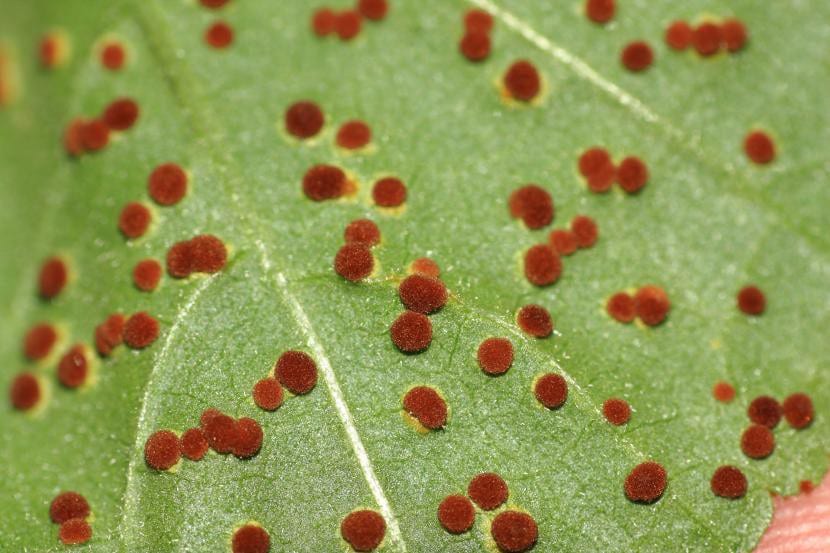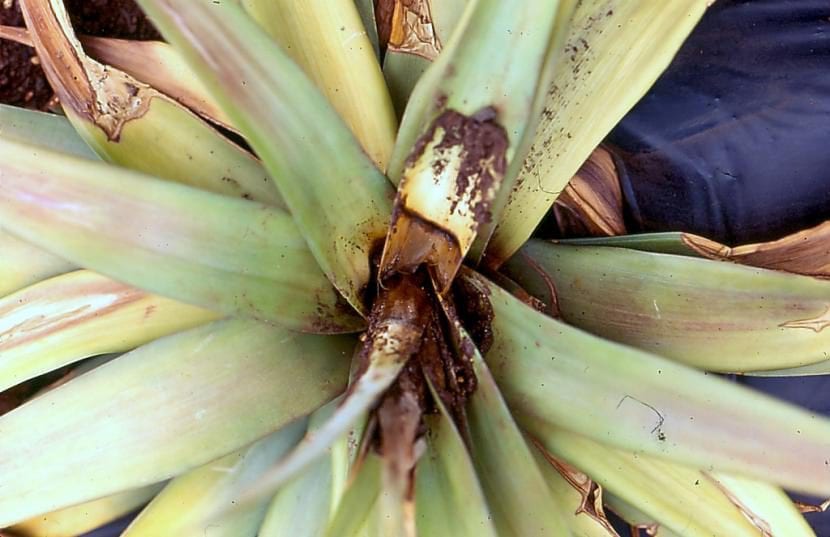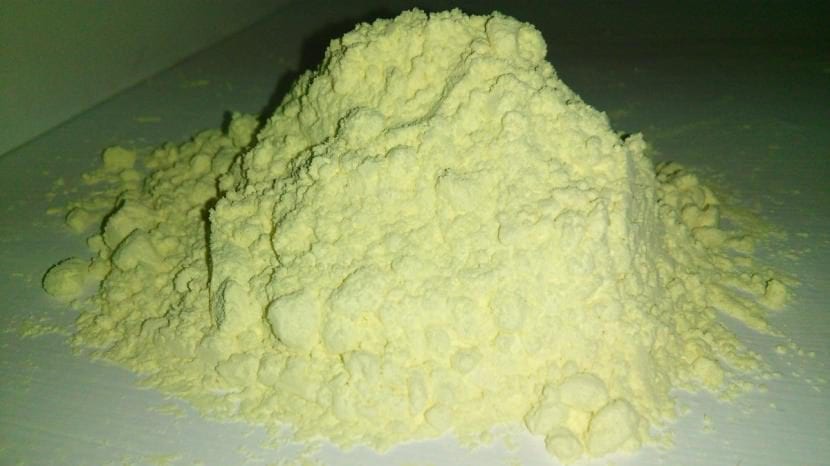
Fungi are the hardiest microorganisms that a gardener must deal with from time to time. They multiply very quickly, inside the stems, leaves and / or roots of plants, so as soon as we realize it, the disease has spread widely.
For this reason, it is difficult to find a fungicide that really helps cure our beloved plant beings, so the most effective treatment is prevention. Even so, I'm going to give you some tricks that will help you know how to remove fungi from plants.
How do I know if my plant has fungus?

Phytophthora fungus on a bromeliad.
There are countless fungi that can affect plants: mildew, powdery mildew, phytophthora, ... Knowing the most common symptoms will help us to detect them as soon as possible:
- Soft trunk: in the plants with caudex (adenium, Cissus, Adenia, Fockea, ...) fungi usually infect the roots first but immediately afterwards the trunk, since that is where they find the best humidity conditions to multiply. In doing so, the log quickly becomes soft.
- Center blade comes out easily: in the palms infected, if we take the newest leaf and pull it up with little force, it comes out quickly.
- Appearance of gray dust or mold, circular red spots, or bumps on leaves and / or stems: if we see any of these symptoms we can be almost sure that it has fungus.
How to eliminate fungi?

Sulfur
As soon as we detect that our plants have fungi, what we must do is the following:
- Treat them with a fungicide: is the first thing we will have to do. Fungicides will help kill fungus. The most recommended are those based on copper, but if the disease is not very advanced we could use powdered sulfur in spring and autumn.
- Space the risks: If we want to prevent the disease from progressing, we do not have to water as often. It is very important to check the humidity of the soil before watering, for example introducing a thin wooden stick (if it comes out with a lot of soil attached, we will not water). Likewise, if we have a plate underneath, we will remove the excess water ten minutes after watering.
- Cut out the affected parts: with scissors previously disinfected with alcohol, we will remove all the affected parts, be it leaves, branches and / or roots (these will be blackened).
In addition, if we have a potted plant whose soil is very humid, these microorganisms will continue to multiply, which would endanger -even more- the plant. To avoid this, we must extract it from the pot, wrap its root ball (earth bread) with double-layer kitchen paper for one night, and the next day we will plant it in a new pot with a substrate that has very good sewer system.
Thus, we will have many possibilities of recovering the plant 🙂.
Hello Monica
I recently purchased two apple trees and a miniature avocado for Mexico City.
Do you recommend that in the pot I plant, in addition to the fruit tree, some grass such as clover?
Hi Martha.
No, I do not recommend it. Tree roots need to be able to have room to develop properly. If you also put an herb, even a small one, you will prevent them from having the amount of nutrients that they would have if they were each alone in their pot.
A greeting.
The above is very instructive. It will be very helpful. Your dedication and expertise is appreciated.
Thanks for your words, Javier. We are glad that it has served you 🙂